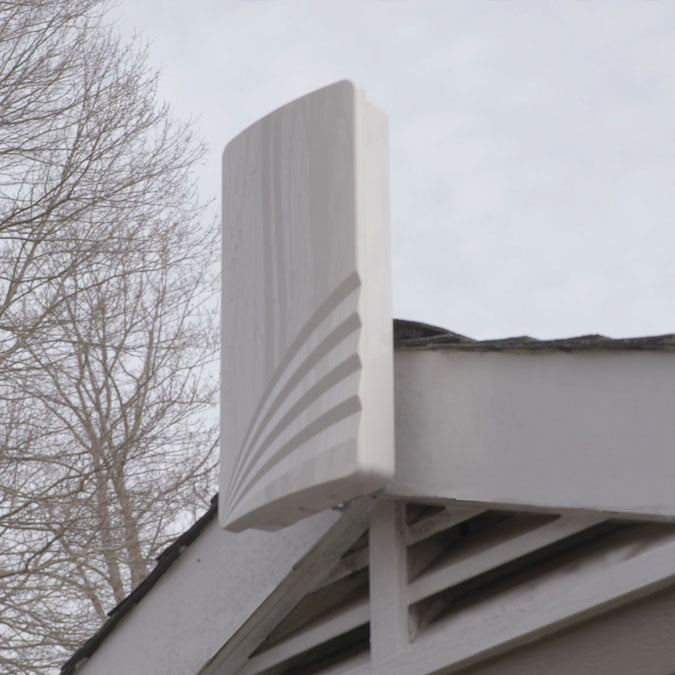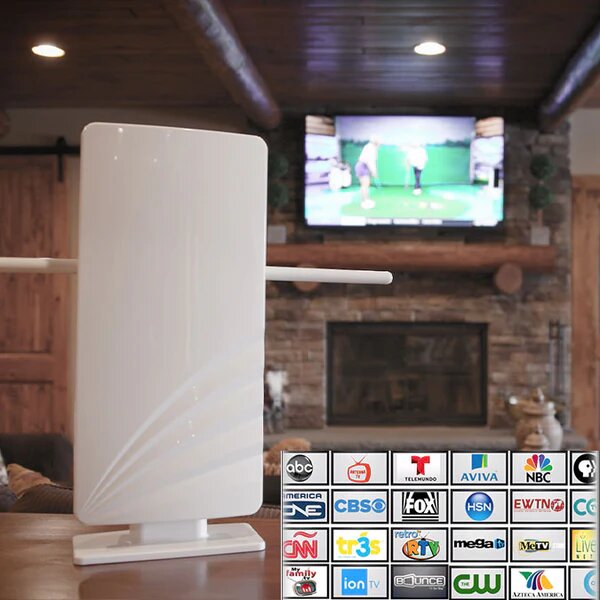HD free antennas are a cost-effective way to access high-definition television without a cable subscription. These antennas capture over-the-air (OTA) signals from local broadcasters, providing crisp, clear images and a wide range of channels. With advancements in antenna technology, users can now enjoy digital broadcasts with minimal interference. Unlike satellite or cable services, HD-free antennas require no monthly fees, making them a budget-friendly option. Additionally, they are easy to install and maintain, ensuring seamless connectivity. Many modern antennas come with amplified reception, boosting signal strength for better picture quality.
How HD Free Antennas Work
HD free antennas function by picking up electromagnetic signals broadcast by television stations. These signals are transmitted in UHF and VHF frequencies and converted into digital images and sound. The antenna’s design determines its ability to capture signals from various distances. Indoor antennas are best suited for urban areas with strong signal reception, while outdoor antennas offer extended range for rural locations. Many antennas now include built-in amplifiers to enhance weak signals, ensuring a smooth viewing experience. Understanding your geographical location and available channels can help you choose the best antenna for your needs.
Benefits of Using an HD Free Antenna
HD free antennas provide numerous benefits, including cost savings and superior picture quality. Unlike cable or satellite subscriptions, there are no recurring fees, making them an economical choice for households. They also deliver uncompressed HD signals, resulting in higher clarity compared to cable transmission. Another advantage is their ability to access local and regional programming, including news, sports, and entertainment channels. The setup process is simple, requiring only a connection to the TV and a channel scan. These antennas are also environmentally friendly, reducing dependency on power-consuming cable infrastructure.
Choosing the Right HD Free Antenna
Selecting the right HD-free antenna depends on several factors, including location, signal strength, and channel availability. Indoor antennas are compact and ideal for city dwellers, while outdoor antennas provide better performance in rural settings. Consider whether an amplified or non-amplified model is suitable based on signal reception in your area. Directional antennas focus on signals from a single source, whereas multi-directional antennas capture signals from multiple broadcast towers. Checking online signal maps can help determine the best placement for optimal performance. Investing in a high-quality antenna ensures long-term reliability and an excellent viewing experience.
Setting Up Your HD Free Antenna
Proper installation of an HD-free antenna is key to maximizing signal reception. Start by placing the antenna near a window or an elevated position to minimize obstructions. If using an outdoor antenna, mount it on the roof or an exterior wall for the best results. Connect the antenna to the TV’s coaxial input and run a channel scan to detect available broadcasts. Adjusting the antenna’s position can enhance signal strength, reducing pixelation or signal loss. Regular maintenance, such as checking cable connections and repositioning the antenna, ensures continuous high-quality reception.
Enhancing Signal Reception for Better Viewing
To achieve the best signal reception with an HD-free antenna, consider factors such as interference, positioning, and amplifiers. Electronic devices and thick walls can disrupt signals, so placing the antenna away from such obstructions is beneficial. Reorienting the antenna towards broadcast towers improves reception. Amplified antennas boost weak signals, enhancing clarity and reducing disruptions. Experimenting with different placements can help determine the best setup. If reception remains inconsistent, upgrading to a more powerful antenna may resolve the issue. Understanding these elements can significantly enhance your viewing experience.
Indoor vs. Outdoor HD Free Antennas
Indoor HD free antennas are convenient and easy to install, making them suitable for apartments and urban areas. They work best in locations with strong signals and require minimal maintenance. Outdoor antennas, on the other hand, provide better range and signal quality, especially in rural areas. They are designed to withstand weather conditions and deliver consistent performance. While outdoor antennas require more complex installation, they often offer superior reception. The choice between indoor and outdoor antennas depends on your location, signal availability, and viewing preferences.
Common Issues with HD Free Antennas and How to Fix Them
Users may encounter issues such as weak signals, pixelation, or missing channels when using an HD-free antenna. Interference from buildings, weather, and electronic devices can disrupt signal quality. Moving the antenna to a higher position or adjusting its angle can improve reception. Running a fresh channel scan helps detect newly available broadcasts. Using an amplifier can strengthen weak signals while upgrading to a higher-quality antenna provides better results. Regularly checking cables and connectors ensures consistent performance. Addressing these common issues can enhance overall viewing satisfaction.
The Future of HD Free Antennas
As technology advances, HHD-free antennas continue to improve, offering enhanced reception and a wider range of channels. The transition to ATSC 3.0, also known as NextGen TV, promises even better picture and sound quality. This new standard will allow for 4K resolution and interactive features, further enhancing the free TV experience. More consumers are turning to HD-free antennas as an alternative to costly cable subscriptions. With continued innovation, these antennas will remain a viable solution for high-quality television access without monthly fees.
Comparing HD Free Antennas to Cable and Streaming Services
HD free antennas provide free access to major network channels, while cable and streaming services require subscriptions. Unlike cable, which compresses signals, antennas deliver uncompressed HD quality. Streaming services offer on-demand content but depend on internet connectivity and subscription fees. HD free antennas are an excellent supplement to streaming, allowing users to watch live broadcasts without buffering issues. For budget-conscious viewers, antennas offer a cost-effective alternative to paid services. Combining an HD-free antenna with streaming platforms provides a comprehensive entertainment solution.
Best HD Free Antennas on the Market
The market offers a variety of HD-free antennas with different features and price points. Some top-rated models include amplified indoor antennas with long-range capabilities and durable outdoor antennas for optimal reception. Brands like Mohu, ClearStream, and RCA offer reliable performance and easy installation. Checking user reviews and expert recommendations can help in selecting the best antenna. Features such as multi-directional reception and signal boosters enhance functionality. Investing in a reputable brand ensures a high-quality and long-lasting antenna for uninterrupted entertainment.
How to Maintain Your HD Free Antenna
Maintaining your HD-free antenna ensures optimal performance and longevity. Regularly inspecting cables and connections prevents signal loss. Cleaning dust and debris from indoor antennas helps maintain clarity. Outdoor antennas should be checked for weather damage and secured properly. Running periodic channel scans updates the available broadcasts. If reception issues arise, repositioning the antenna can improve signal quality. Keeping the antenna away from electronic interference enhances performance. A well-maintained antenna provides consistent access to high-definition channels without interruption.
Why Should You Switch to an HD Free Antenna?
Is an HD Free Antenna Worth It?
An HD-free antenna is a worthwhile investment for anyone looking to cut cable costs. It offers high-definition channels without subscription fees, making it a cost-effective alternative. The setup is simple, requiring minimal effort. Additionally, the quality of OTA broadcasts often surpasses that of cable services. If live TV is essential, an HD-free antenna is an excellent choice.
Can an HD Free Antenna Work in My Area?
HD-free antennas work in most areas, but signal reception depends on the distance from broadcast towers and local terrain. Urban dwellers typically receive more channels, while rural users may need amplified antennas. Checking signal availability before purchasing an antenna helps determine the best option.
How Many Channels Can I Get with an HD Free Antenna?
The number of channels received depends on location, signal strength, and antenna type. Major networks like ABC, NBC, CBS, and FOX are commonly available. Some areas receive additional local stations, providing a variety of entertainment, news, and sports programming.
